This article has been reviewed according to Science X's editorial process and policies. Editors have highlighted the following attributes while ensuring the content's credibility:
fact-checked
trusted source
written by researcher(s)
proofread
Possible hints of life found on distant planet. How excited should we be?
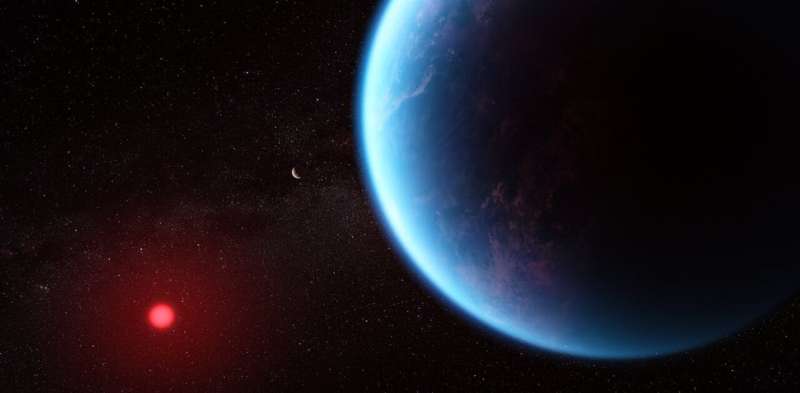
Data from the James Webb Space Telescope (JWST) has shown that an exoplanet around a star in the constellation Leo has some of the chemical markers that, on Earth, are associated with living organisms. But these are vague indications. So how likely is it that this exoplanet harbors alien life?
Exoplanets are worlds that orbit stars other than the sun. The planet in question is named K2-18b. It's so named because it was the first planet found to orbit the red dwarf star K2-18. There is a K2-18c as well—the second planet to be discovered. The star itself is dimmer and cooler than the sun, meaning that, to get the same level of light as we do on Earth, the planet would need to be much closer to its star than we are.
The system is roughly 124 light years away, which is close in astronomical terms. So what are conditions like on this exoplanet? This is a difficult question to answer. We have telescopes and techniques powerful enough to tell us what the star is like, and how far away the exoplanet is, but we can't capture direct images of the planet. We can work out a few basics, however.
Working out how much light hits K2-18b is important for assessing the planet's potential for life. K2-18b orbits closer to its star than Earth does: it's at roughly 16% of the distance from Earth to the sun. Another measurement we need is the star's power output: the total amount of energy it radiates per second. K2-18's power output is 2.3% that of the sun.
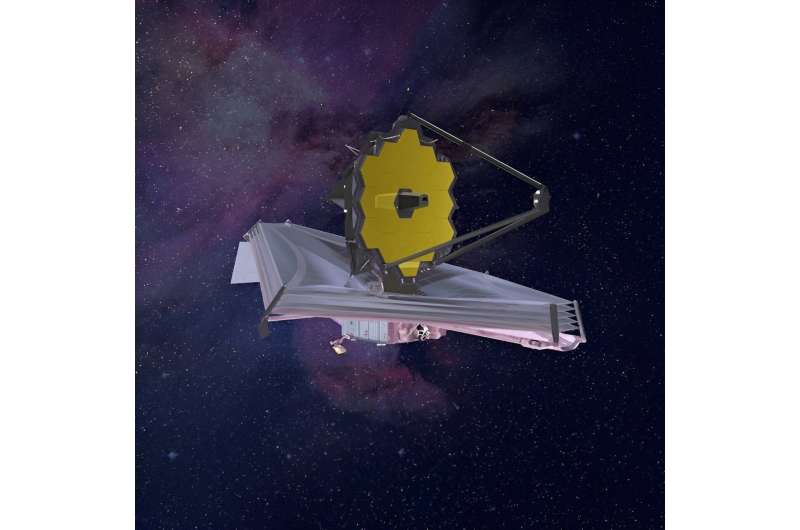
Using geometry, we can work out that K2-18b receives about 1.22 kilowatts (kW) in solar power per square meter. This is similar to the 1.36 kW of incoming light we receive on Earth. Although there's less energy coming from K2-18, it evens out because the planet is closer. So far, so good. However, the incoming light calculation doesn't take into account clouds or how reflective the planet's surface is.
When we consider life on other planets, a popular term to use is the habitable zone, which means that at an average surface temperature, water will be in a liquid state—as this condition is considered essential for life. In 2019, the Hubble Space Telescope determined that K2-18b showed signs of water vapor, suggesting that liquid water would be present on the surface. It is currently thought that there are large oceans on the planet.
This caused a ripple of excitement at the time, but without further evidence it was just an interesting result. Now we have reports that JWST has identified carbon dioxide, methane and—possibly—the compound dimethyl sulfide (DMS) in the atmosphere. The tentative detection of DMS is significant because it is only produced on Earth by algae. We currently know of no way it can be naturally produced without a life-form.
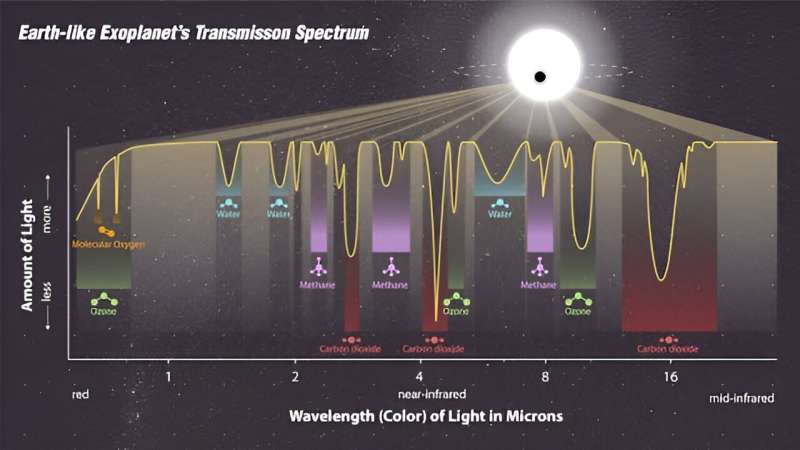
Is there life on K2-18b?
All these indications seem to suggest that K2-18b might be the place to go to find alien life. It is not quite as simple as that, though, as we have no idea how accurate the results are. The method used to determine what is in the atmosphere of an exoplanet involves light from a different source (usually a star or galaxy) passing through the edge of the atmosphere that is then observed by us. Any chemical compounds will absorb light in specific wavelengths which can then be identified.
Imagine it as looking at a light bulb through a glass tumbler. You can see through it perfectly when empty. If you fill it with water, you can still see through pretty well, but there are some optical effects and coloration, which are the equivalent of hydrogen and dust clouds in space. Now imagine you poured in red food dye—this might be the equivalent of the main chemical constituent in a planet's atmosphere.
But most atmospheres are made up of many chemicals. The equivalent of looking for any one of them would be like pouring 50—likely many more—colored food dyes, in different amounts, into your tumbler and trying to identify how much of one particular color is present. It is an incredibly difficult task with plenty of room for subjective assessment and errors. In addition, the light going through the atmosphere contains a signal of the star's chemical constituents—further complicating the analysis.
Only a few years ago there was a surge of interest in whether life existed on Venus, as observations had indicated the presence of phosphine gas, which can be produced by microbes.
-
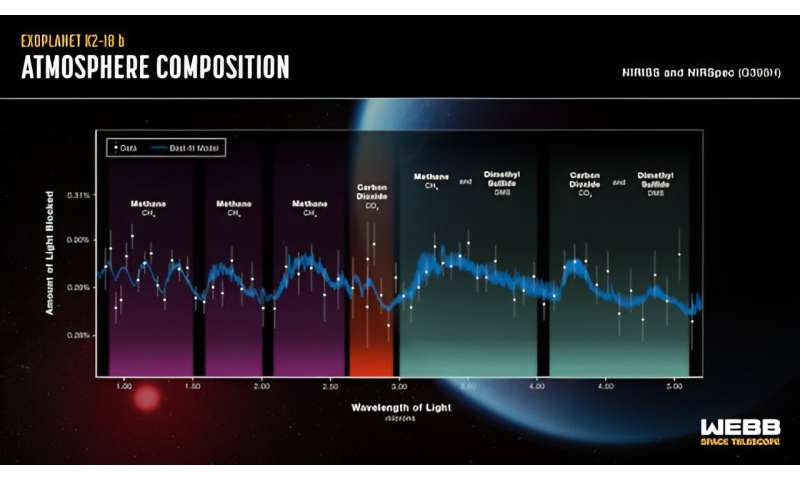
The chemical composition of K2-18b’s atmosphere. Credit: NASA, CSA, ESA, R. Crawford (STScI), J. Olmsted (STScI), Science: N. Madhusudhan (Cambridge University) -
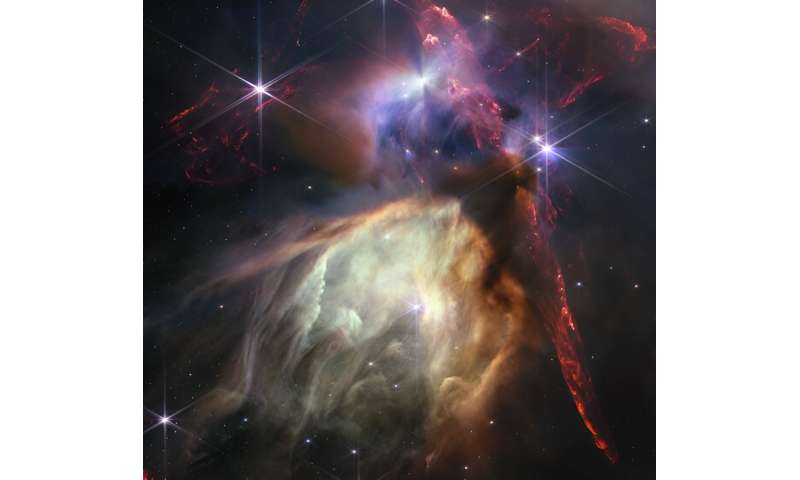
Credit: NASA, ESA, CSA, STScI, Klaus Pontoppidan (STScI)
However, this finding was later successfully refuted by several studies. If there can be confusion about what is in the atmosphere of a planet that's just next door, in astronomical terms, it's easy to see why analyzing a planet that's many times further away is a difficult task.
What can we take from this?
The chances of life on exoplanet K2-18b are low but not impossible. These results will likely not change anybody's opinions or beliefs about extraterrestrial life. Instead, they do demonstrate the advancing ability to look into worlds that are not our own and find more information.
The power of JWST is not only in producing incredible pictures, but in providing more detailed and accurate data on celestial objects themselves. Knowing which exoplanets host water and which do not could provide information on how the Earth formed.
Studying the atmospheres of gas giant exoplanets can inform the study of similar worlds in the solar system, such as Jupiter and Saturn. And identifying levels of CO2 indicates how an extreme greenhouse effect might affect a planet. This is the real power of studying the composition of planetary atmospheres.
Provided by The Conversation
This article is republished from The Conversation under a Creative Commons license. Read the original article.![]()





















